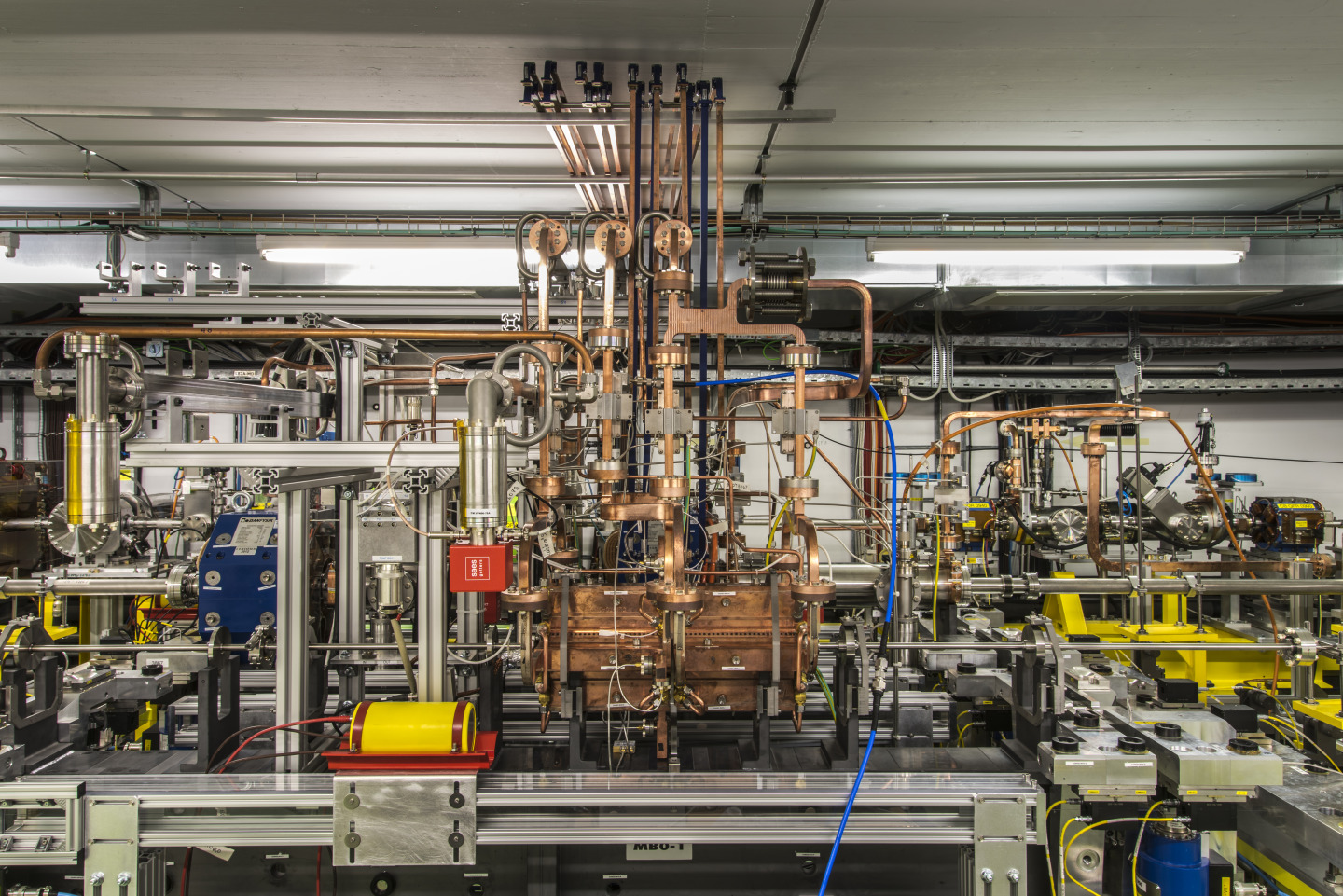This March saw the annual workshop of the Compact Linear Collider (CLIC) at CERN, gathering 220 collaborators from over 26 countries to discuss the latest status of the CLIC accelerator and detector studies.
Two collaborations exist to study the feasibility of a future electron-positron linear collider at CERN, for the era beyond the High-Luminosity LHC. The first, the CLIC accelerator collaboration, is studying a novel two-beam concept to reach high accelerating gradients of 100 MV/m, to allow the realisation of a compact and affordable multi-TeV linear collider. The second, the CLIC detector and physics (CLICdp) collaboration, is dedicated to detailed detector and physics studies, with the goal of fully exploiting the physics potential at CLIC.
During the workshop particular focus was directed towards the recently published updated staging scenario for the CLIC accelerator, where construction and operation is pursued in three energy stages with collision energies of 380 GeV, 1.5 TeV and 3 TeV respectively. The first beams could be foreseen in 2035; the starting point of a 22-year long physics programme.
“The CLIC accelerator is based on a revolutionary concept for linear acceleration up to multi-TeV energies,” says CLICdp spokesperson Lucie Linssen. “It remains the only mature option that could take us to multi-TeV electron-positron collisions.”
Several talks were given to provide an overview of the CLIC accelerator, detector and physics programme, and during the open plenary session on 8 March 2017 many focused on the programme in the context of the LHC results. CLICdp have recently released a comprehensive paper on Higgs studies and is now moving towards an overview paper on top quark physics covering studies of the top mass at, and beyond, the top pair production threshold, as well as top electroweak and Yukawa couplings, rare decays and more.
While CLIC Week 2017 hosted a variety of sessions on detector development and optimisation, as well as new results and future prospects of physics studies, the opening plenary session focused on the use of CLIC-related developments in other applications and the spokesperson for the CLIC accelerator collaboration, Philip Burrows, presented the pathway towards the European strategy for 2019 and beyond.
We also heard how, with the adoption of a single detector concept based around the interaction point, a new unified detector model has been developed for CLIC. The detector features all-silicon vertex and tracking detectors, for which a wide range of detector R&D is currently underway. An overview of the tracking detectors and relevant technologies was presented by Daniel Hynds; this included recent results from a range of emerging silicon detector concepts, such as High Voltage (HV-) and High Resistivity (HR-) CMOS, Silicon-on-Insulator (SOI) and a number of prototype devices fabricated as part of the CLIC research effort.
Many of the technologies under study for the CLIC detector are also of interest to the High-Luminosity LHC upgrade, as well as for the HEP community at large. This extends beyond the detector R&D, where software reconstruction techniques developed for particle flow at linear colliders has been applied to current and next-generation neutrino experiments.
Further information:
- This article is a summary of an update written for the EP newsletter, read the article in full.
- Indico page

